There are estimates that the world’s population will reach 8.5 billion by 2030. In a country with such a huge population, the agricultural industry has been more in demand. The practice of sustainable agriculture ensures that our society’s current needs are met without compromising the ability of future generations to produce their food. In recent years, greenhouse agriculture has become one of the most important means of promoting sustainable food supplies worldwide, especially by promoting local food production and consumption practices.
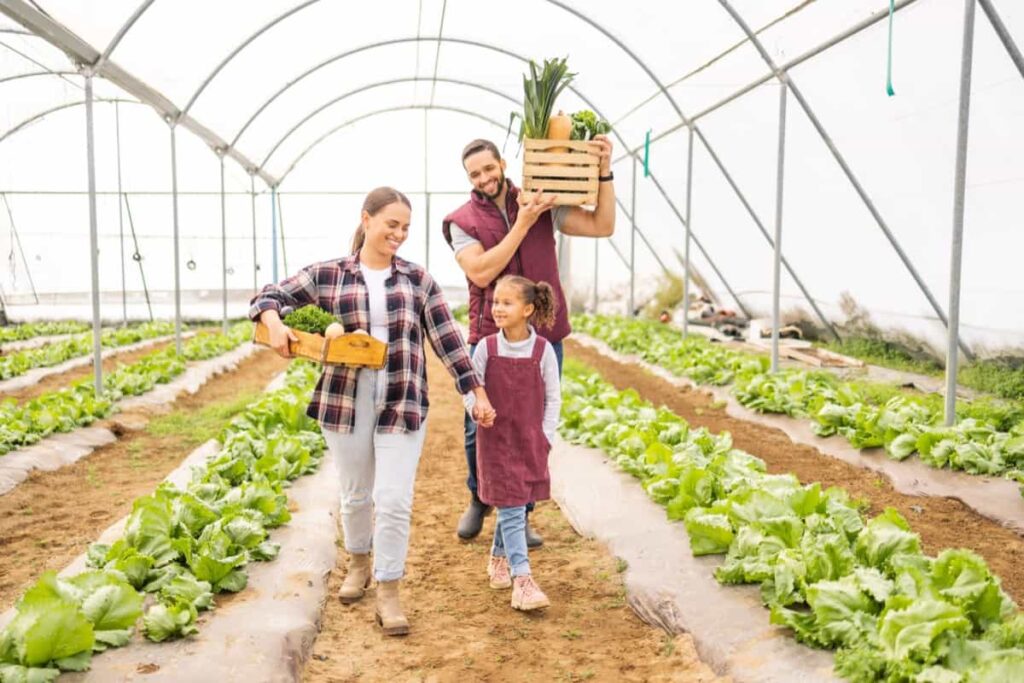
As a result of the high application limits allowed for nitrogen fertilizers, it is also an industry that poses a very high risk to groundwater pollution because far higher nitrogen fertilizer application limits are allowed than in conventional agriculture. There has been considerable attention paid to characterizing any environmental impacts associated with agriculture, including greenhouses, but the influence of social, economic, and political factors has been neglected. So sustainable greenhouse farming is the solution to overcome all these.
Sustainable Greenhouse Farming
Ways Greenhouses Contribute to Sustainable Agriculture
Water Recycling
It is common for greenhouses to use a fertilizer solution called nutrient feedwater to assist in the growth of their plants. During multiple growing cycles, this feedwater solution is circulated throughout the facilities, where it is used for multiple purposes. This way, surface water, groundwater, and soil minimize the pollutants injected into them.
In case you missed it: How to Start Sustainable Dairy Farming: Benefits and How to Reduce Your Carbon Footprint With Dairy Cattle
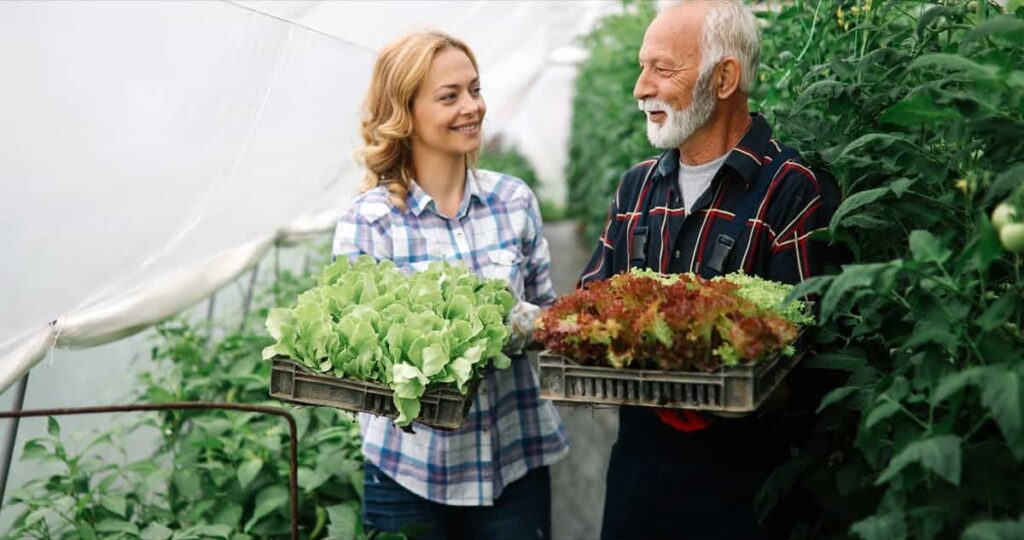
Co2 Recapture
It is challenging to keep a large greenhouse warm enough all year round so fresh and flavorful produce can be grown there. Many greenhouses utilize special boiler systems to ensure that they maintain an optimal temperature in the greenhouses during their operations. The CO2 being expelled from this system can be captured, filtered, and used as a natural, air-borne fertilizer to feed the plants as they grow in this type of system.
Natural Pollination
A standard practice in the greenhouse industry involves using bumblebees to pollinate naturally. In addition to improving the quality and quantity of the produce grown, these hardworking bumblebees can also reduce the need for harmful chemicals and pesticides on the farm.
Steps Involved in Designing a Sustainable Greenhouse
Step 1: Select the Right Site
Choosing the right location for your greenhouse is not only the first step in the design process but is arguably also the most important step because it can be a costly and wasteful mistake if you get it wrong. According to estimates, more than 80 percent of the energy used to heat greenhouses is kept warm, especially during the winter, when growers use heaters throughout the season to maintain a temperature of 18°C throughout the greenhouse.
A greenhouse should therefore be designed in such a way that it can provide as much light and natural heat to your plants as possible. It will help save energy on lighting during the off-season, and it will also make it an ideal place for solar panels to be erected. It is recommended that greenhouses be placed along an east-west orientation, with the long side facing south, to maximize the sunlight available to the plants. It is important to note that this depends on your geographic location, so use the chart below to find the ideal placement according to your latitude.
Step 2: Design the Right Structure
Choosing the right shape for your greenhouse and using the right structural features is also crucial to maximizing sunlight and reducing energy costs simultaneously. During the construction process, modular construction, also known as prefabricated construction, can save almost 70% of the time, money, and energy. Because modular units have already been tested to ensure their efficiency and durability before being installed, you can be confident of their performance once installed on your property.
In case you missed it: How to Start Sustainable Sheep Farming: Benefits and How to Reduce Your Carbon Footprint with Sheep
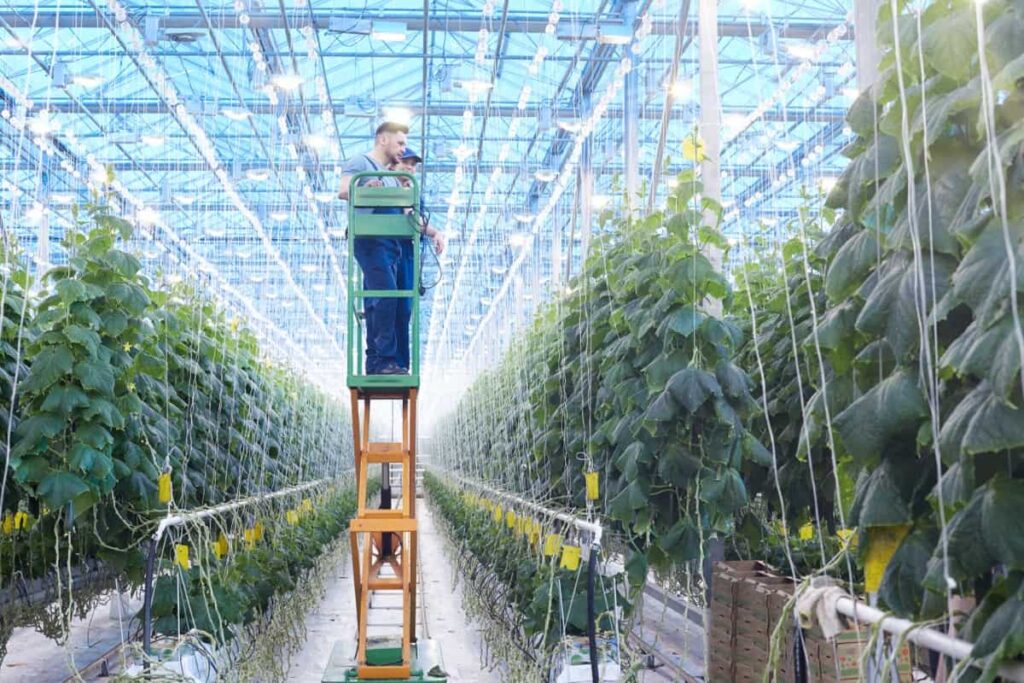
It is also crucial to take into consideration the design of the flooring. Using compacted soil is an easy, natural, and cheap way to build a foundation. Since dirt is porous, water runoff can pass through without much hassle or adjustment due to its porous nature. The best use of this method is for smaller, temporary greenhouses. A larger, heavier structure will most likely settle due to its weight, potentially warping and breaking its structure.
Ground covers such as gravel are easy to install and drain well and are widely available as a ground cover. However, it is advised to use concrete slabs, wooden decks, or stone or brick paved foundations for larger, more permanent facilities. Each option can provide long-lasting durability, but each has pros and cons.
As easy as cement foundations are to clean and install, they are also more expensive, do not offer drainage, and can act as a heat sink, thereby balancing the temperature inside the building. You should install a centralized drain outside the walls of your facility if you choose to build your building on a cement foundation to prevent excessive moisture and water buildup within the walls of your building.
- The cracks between the pavers on a stone or brick paved foundation allow for more drainage, and some stones retain some heat better than others. Depending on your seasonal needs, this can be a very cost-reducing way to heat your greenhouse.
- Wooden decks may be your most sustainable option if you source them from a sustainable lumber company that provides sustainable products. The beauty of wood is that it is easy to clean and provides optimal drainage. Because of the open air underneath the greenhouse, however, does not offer a great deal of insulation.
- The type of foundation you choose depends on the climate in your area. Choosing a foundation that optimizes natural temperature and moisture regulation is the key objective when choosing a foundation.
- Also, you should know your municipal building codes and contact your local environmental protection agency if you plan on using pesticides or fertilizers in your garden, especially if you intend to use non-toxic green pesticides or fertilizers.
Step 3: Build with Sustainable Materials
You need to make sure that you choose the right type of metal when constructing metal framing to withstand the weather elements in your area. Consider using forged metal with a 37% higher fatigue strength than ordinary metal, making it more likely to withstand long-term wear. Take a look at the options available for eco-friendly greenhouse panels and coatings. Instead of investing in plastic panels, it would be best to invest in glass panels.
In case you missed it: Sustainable Poultry Farming: Benefits and How to Reduce Your Carbon Footprint with Chickens
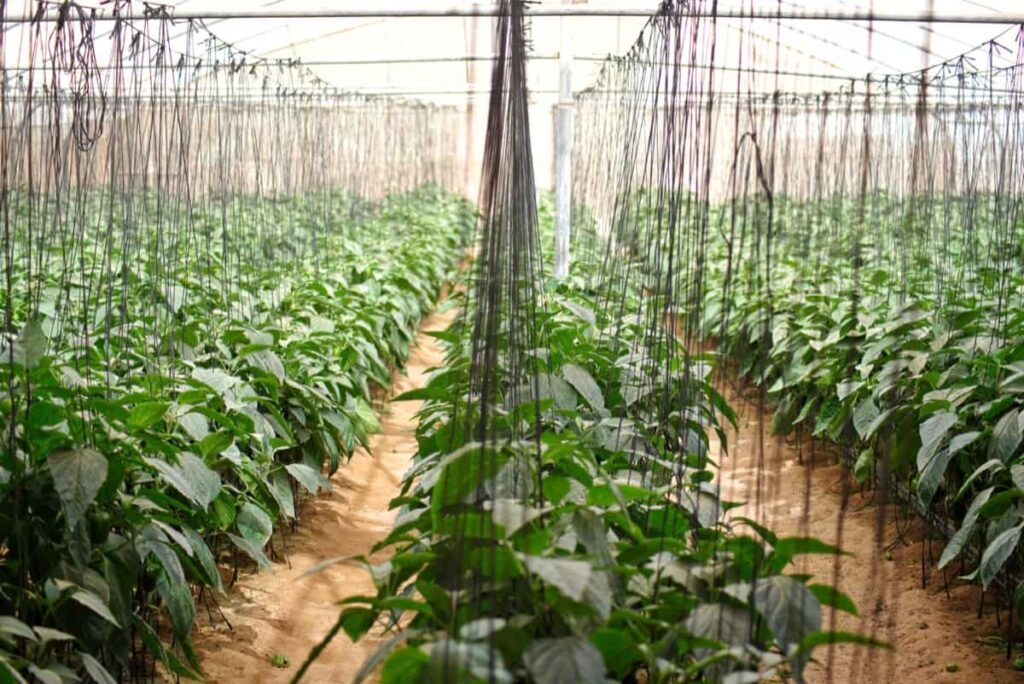
As well as being more effective at retaining heat, glass is more durable long-term and recyclable, making it a more sustainable option than other materials. In addition to adding some decorative color to the outside of your greenhouse, coatings are also important for capturing sunlight and controlling the greenhouse’s temperature.
Depending on how much sunlight and heat you want inside your greenhouse, there are a variety of coating purposes – shading, transmission, diffusion, reflection, and so on. Consider purchasing a product that will serve the purpose of decoration and control sunlight/temperature. In addition, you should search for products with low- or no volatile organic compounds (VOCs) so that harmful chemicals are not released into the air.
Step 4: Implement a Sustainable Watering System
By implementing a sustainable watering system, you can conserve water while saving time and money. Various irrigation and watering devices can be incorporated, including moisture meters, soaker hoses, and water reservoirs. Unlike conventional sprinkler irrigation, drip irrigation can reduce water use by up to 70 percent. Additionally, drip irrigation more directly and efficiently waters plants, resulting in less work for you.
As a primary source of greenhouse irrigation, natural water resources are the most sustainable. Pumps can reach nearby water wells, streams, and ponds, but local water tables will dictate how much you can use. As it is free and uses a water source that is often wasted, rainwater collection is a great option.
Step 5: Follow the 3 Rules: Reduce, Reuse, Recycle
Conserve resources and eliminate landfill waste by reducing, reusing, and recycling. Consider repurposing materials and using those made from recycled materials when choosing building materials. You can use reclaimed wood for plant bed frames or greenhouse anchors. Another way to avoid buying new pavers is to buy reclaimed granite or brick ones. Pots, planters, and seed starters can be reused to reduce plastic waste. You can also reduce your water consumption by repurposing gray water for gardening.
Step 6: Optimize Energy Usage
Energy efficiency should be taken into account when designing or renovating your greenhouse. Plug-and-play wiring systems reduce energy consumption and installation time, making them the best choice for greenhouse lighting. Install LEDs and optimize natural lighting. LEDs also serve as effective heat elements that consume only 14 W of electricity each if additional heating is needed.
In case you missed it: Unlocking the Potential Of Sustainable Aquaculture: How to Start and What You Need to Know

Adding solar-powered pathway lights to your greenhouse is also a great idea. Any greenhouse appliance that needs electricity can be powered by solar power, depending on your location. You can install panels without interfering with the natural beauty of your nursery.
Advantages of Sustainable greenhouse farming
There are many structural, environmental, and economic benefits associated with sustainable greenhouse farming, which is why it has become so popular. The greenhouse produce industry includes both home operations and large commercial processors. Compared to traditional farming, sustainable greenhouse farming offers many benefits, including less pollution, less energy consumption, and greater resource conservation.
Plants can also be grown year-round in greenhouses with optimal climate control settings, resulting in greater crop flexibility. With technological advances, sustainable greenhouse farming could help us meet food needs while reducing our environmental impact.
Increased Production
As sustainable greenhouse farming creates ideal climate conditions for plant growth, more plants can be grown per square foot than in open fields, thus increasing crop production.
Minimizing Production Risks
Climate-related extremes, such as sudden temperature increases or drops, are less likely to damage crops when enclosed. In addition, it can protect crops from birds and other animals that might harm them.
Maximizing Profits
When sustainable greenhouse farming is combined with other approaches, such as hydroponics, profits per crop per square foot can be two to three times greater than open-field farming. Using resources more efficiently can result in less waste, leading to higher profits. Greenhouse-growing crops produce 6 to 10 times more yield than growing them in open fields.
In case you missed it: How to Start Sustainable Pig Farming: Business Plan, Benefits, and Requirements
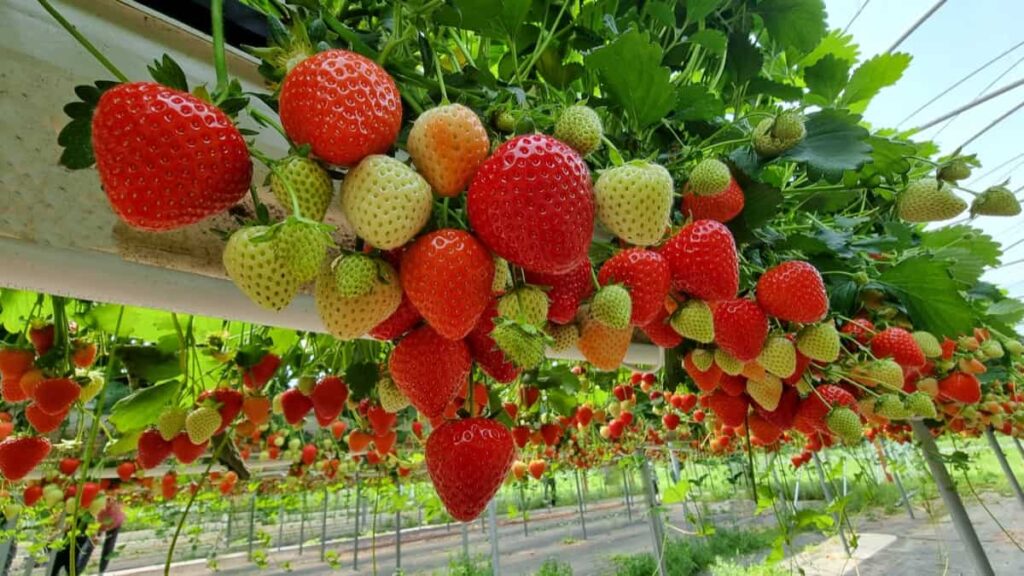
The yield is six to ten times greater than in an open field for every square meter of land or cubic meter of water used in a greenhouse. Even the recycling of water and fertilizers can contribute to these resource savings. Hydroponically grown crops in greenhouses have relatively small roots; 40% of the drainage water can be reused. In addition, 40 to 50% of fertilizers can be reused.
Disease & Pest Prevention
Keeping greenhouses can prevent pest problems and provide more protection against diseases. Keeping the enclosed area to only the essential staff reduces the risk of bringing unwanted elements close to the crops. Furthermore, it allows you to isolate problems if they arise. You can save your harvest by moving infected or diseased plants away from the rest of the crops.
Year-Round Growing
Climate-controlled greenhouses allow crops to be grown all year round rather than just seasonally. If you have the right technology to create the right climate inside the greenhouse, you can grow high-quality crops in harsh winter colds or intense summer heat. The ability to achieve optimal growing conditions is one of the greatest advantages of greenhouses.
Climate control is not possible in open fields. It is possible to cultivate tomatoes in a greenhouse in winter if it is too cold to grow them outside. Humidification can be added when it is too hot or dry to grow outside in the greenhouse during the summer. Growing conditions can also be controlled, which reduces the risks associated with sudden weather changes, giving growers a sense of security and predictability.
Increased Stability and Security
Since outside conditions don’t necessarily impact plants or workers, the greenhouse’s protected environment provides a safe and stable condition.
In case you missed it: Sustainable Goat Farming: Business Plan, Benefits, and Requirements
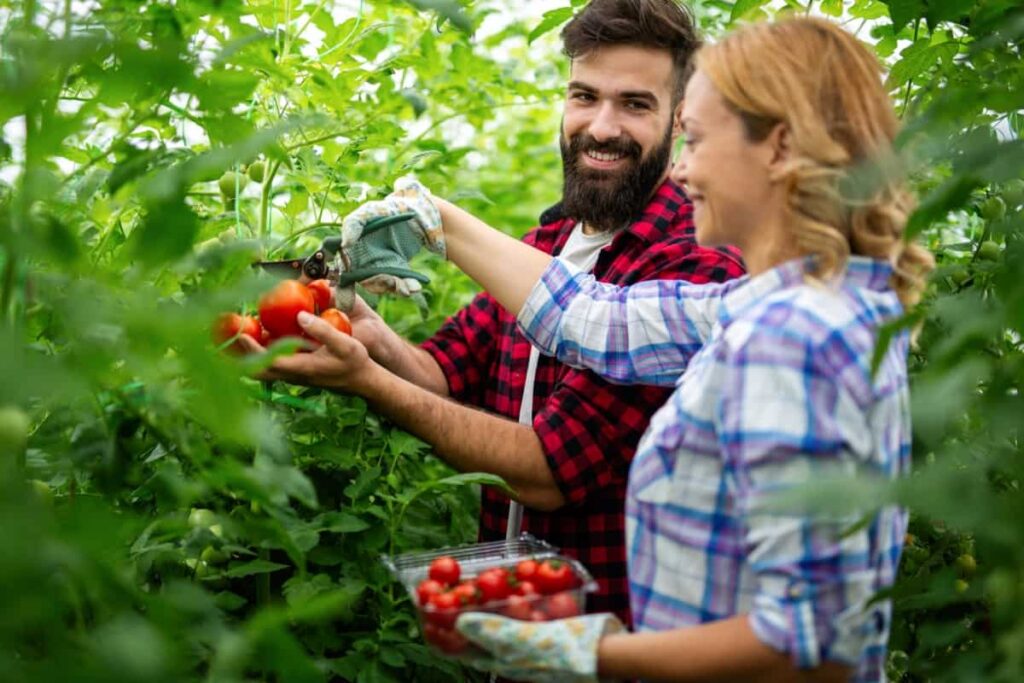
Conclusion
India is the 3rd largest producer of greenhouse gases in the world. And they are presenting to almost ⅕ of the national total. The country’s priority is to reduce emissions as much as possible in the coming years. The sustainable greenhouse farming business plan is worldwide the quickest developing area. It is a goldmine that offers the most productive business openings. The utilization of the nursery is fundamentally for creating non-seasonal and seasonal crops, developing top-notch blossoms and vegetables, and arranging a nursery by tissue culture.
- How to Raise Pigs in Your Own Backyard: A Comprehensive Guide
- Budget Friendly Sheep Shed Ideas: Cheap and Low-Cost Tips
- How Much Do Cattle Farmers Make: Revenue Streams in Cattle Farming
- Management Pests and Diseases in Your Cotton Field
- Sheep Farming Business Plan for Beginners
- Aquaponic Farming at Home: A Step-By-Step Guide
- Profitable Village Farming Business Ideas in 2024
- High-Yield Aquaculture: Fast-Growing Fish for Farming
- Effective Fish Pond Construction Techniques for Beginners
- Irrigation and Water Management in Pineapple Farming
- Blossom to Harvest: Mastering Flowering and Pollination in Papaya Farming
- Pig Fattening Essentials: From Selection to Sale for Beginners
- Raising Wagyu Cattle: A Complete Guide for Premium Beef Production
- Soil Types and Their Water Holding Capacity
- Optimizing Irrigation Schedules for Coconut Groves for Enhanced Yield
- Espresso Your Garden: Coffee Grounds for Healthier Acid-Loving Plants
- The Best Soil Mix for Snake Plants: How to Mix Your Own Snake Plant Soil
- Green Thumb Success: Expert Tips for Cultivating Greenhouse Beans All Year Round
- Bloom All Year Round: The Ultimate Guide to Indoor Hyacinth Care
- Eco-Friendly Gardening: How to Make Liquid Fertilizer from Kitchen Waste
- Ultimate Guide to Grow Anise in Pots: Explore Seed Propagation to Harvesting
- Guide to Raising Chester White Pigs: Discover Breed Facts to Growth Management
- Mastering the Elegance: The Ultimate Guide to Weeping Cherry Tree Care, Planting, and Maintenance
- Ultimate Guide to Planting Garlic in Grow Bags: Growing Strategies for Beginners
- How to Fix Spider Plant Leaf-Related Problems: Natural and Organic Remedies
- 10 Reasons Why Your Tulsi Plant is Shedding Leaves: Home Remedies and Solutions
- Optimizing Growth and Yield: The Advantages of Palm Bunch Ash Fertilizer
- Utilizing Neem Oil Extract as a Natural Pesticide for Hydrangea
- From Soil to Harvest: Various Ways in Which Farmers Can Use AI Tools
- Steps to Encourage and Induce Citrus Flowers: A Comprehensive Guide
- How to Fix Snake Plant Leaf-Related Issues: Natural and Organic Remedies
- Transform Your Garden into a Fragrant Oasis with Raat Ki Rani (Night Blooming Jasmine)
- Discover the Ideal Chicken Breeds for Philippine Farms
- How to Create a Poultry Egg Farm Business Plan for Profits
- Grow Lemon Cucumbers Like a Pro: Insider Techniques for Bountiful Yields
- Ultimate Guide to Caring for Your Pink Princess Philodendron: Tips for Thriving Variegation
